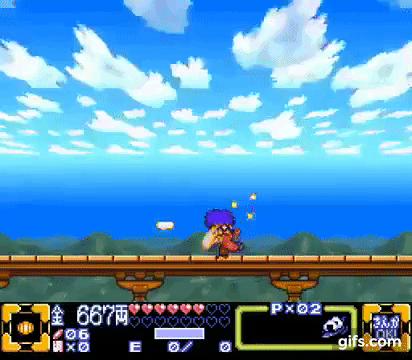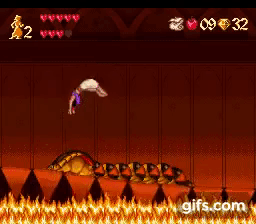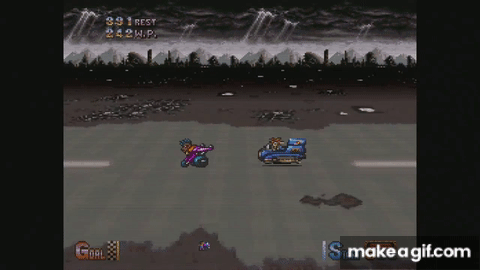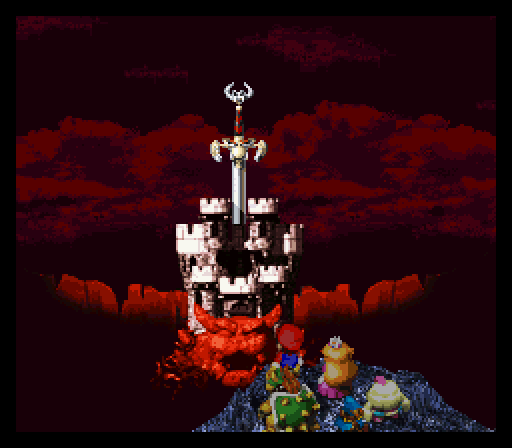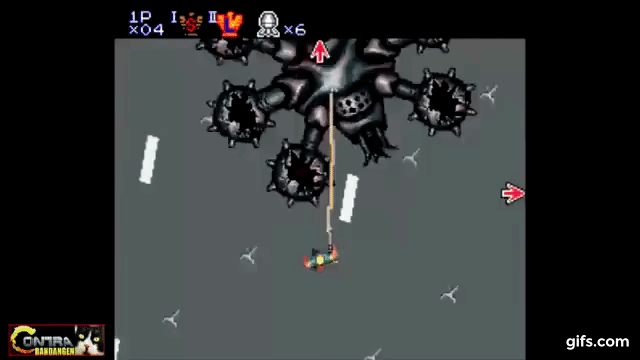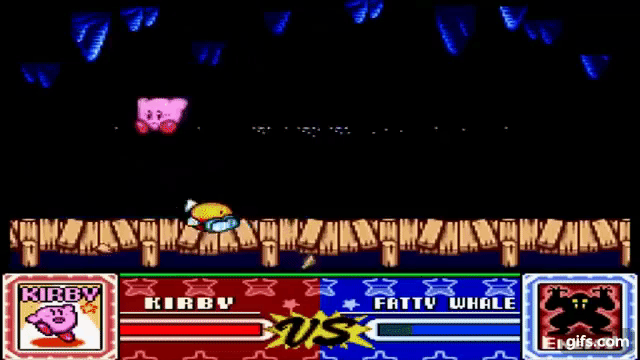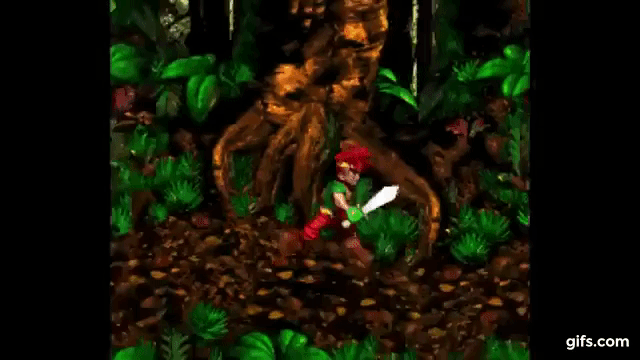IbizaPocholo
NeoGAFs Kent Brockman
The Super Nintendo has arguably aged better than any other console. In 1990 the SNES launched with advanced graphical effects. Transparencies, masking, pixelation effects and yes MODE7, but the hardware was capable of much more. In today's episode we deep dive into some of the unique features that the Super NES had built into its hardware that its competition was not capable of (without clever programming tricks). This is the Timeless Beauty of SNES Graphics.
Timestamps:
00:00 - Introduction
01:24 - The SNES has 2 screens.
02:52 - Transparencies and Color Math
05:50 - Why Early SNES Emulators were slow
07:32 - Windows and Masking
09:00 - Mosaic Effect
13:01 - Conclusion and Outro
Launch and Impact of the Super NES
- The Super NES launched in 1990, marking a significant advancement in 2D tile-based drawing technology.
- It featured advanced graphical capabilities that were groundbreaking for home consoles at the time, resulting in visually stunning games.
- Even after 30 years, the graphics of these games remain striking, contributing to the ongoing popularity of the Super NES among retro gaming enthusiasts.
- Nintendo continues to provide a selection of Super NES games through its Nintendo Switch Online service, ensuring the legacy of the platform endures.
Hardware Capabilities
- The Super NES supports up to four background layers and one object or sprite layer, allowing for complex visual arrangements.
- Background layers can be individually scrolled, and each mode used by developers has specific limitations regarding color and layer support.
- The hardware utilizes two screens: the main screen, which displays the primary content, and a sub-screen, which mirrors the main screen's data.
- The sub-screen serves as a render target, allowing developers to enable or disable background layers on either screen to create various visual effects.
Color Math and Visual Effects
- The Super NES employs color math calculations between the main and sub-screens to create effects such as transparency, lighting, shadowing, and masking.
- This technique allows for enhanced animations and visual depth in games, contributing to their overall aesthetic appeal.
- For example, in Donkey Kong Country, volumetric lighting effects were achieved through the combination of background and object layers across the two screens.
- Chrono Trigger also showcases impressive lighting effects, such as God Rays, which enhance the game's atmosphere by simulating natural light.
Color Subtraction Techniques
- Color subtraction is another method of color math where the sub-screen data is subtracted from the main screen, creating darker areas that simulate light sources.
- This technique is exemplified in games like Pugsley's Scavenger Hunt, where it provides the illusion of a light source by darkening the surrounding areas.
- In Donkey Kong Country, torchlight effects utilize color subtraction to create a contrasting dark environment outside the illuminated areas.
Color Averaging and Blending Effects
- Color averaging is a popular blending option that takes the average of two images, allowing for translucent effects such as water, fog, and shadows.
- An example of this effect can be seen in Secret of Mana, where it creates a distinct visual style that enhances the game's immersive experience.
- The blending techniques employed by the Super NES contribute significantly to the unique aesthetic of many games from the era.
Challenges in Emulation
- Early Super NES emulation faced significant challenges, particularly with accurately replicating transparency effects due to a lack of comprehensive documentation.
- Emulators often struggled to simulate the timings between the SNES's PPU and CPU, complicating the recreation of visual effects.
- The limitations of DOS-based systems, which typically supported a 256-color VGA display, further hindered the accurate emulation of the Super NES's 15-bit color palette.
- It wasn't until later emulators like SNES9x that these functionalities were accurately represented, allowing for better transparency and visual fidelity.
Masking Windows and Their Applications
- The Super NES features masking windows that can be applied to either the main or sub-screen, enabling the masking of portions of backgrounds on a scan line basis.
- This technique allows for dynamic visual effects, such as those seen in Super Metroid, where it enhances the game's environmental storytelling.
- In Chrono Trigger, masking windows are used to create color gradients in dialogue frames, enhancing the visual appeal of the game's narrative elements.
Mosaic Effects and Their Uses
- The Super NES includes a mosaic effect that creates a pixelation effect on the screen, often used for transitions or fade effects.
- This effect is distinct from mode 7 and is applied on a per-background basis, allowing for creative visual storytelling in games.
- Games like Street Fighter 2 utilize the mosaic effect for dynamic logo presentations, while magical quest employs it during boss encounters to enhance visual impact.
Tile Offsets and Advanced Scrolling Techniques
- The Super NES features offsets per tile, allowing for individual horizontal and vertical scrolling, which can create unique visual effects such as rotation simulations.
- This capability is exemplified in games like Star Fox, where the background rotates in response to the player's actions, adding to the immersive experience.
- Another example is found in Super Turrican 2, where vertical tile offsets create a visually dynamic environment as players interact with enemies.
Mode 7 and Its Unique Features
- Mode 7 is a distinctive feature of the Super NES that allows for complex transformations of a single background layer, enabling effects such as rotation and scaling.
- Classic examples include the rotating backgrounds in Super Mario Kart and Super Castlevania, showcasing the hardware's capabilities.
- Mode 7 also allows for a secondary background, known as EXT BG, which can layer sprites behind the mode 7 background, enhancing the illusion of depth in gameplay.
- Games like Contra 3 and Super Turrican 2 effectively use this layering technique to create engaging visuals that enhance gameplay dynamics.
Conclusion and Legacy of the Super NES
- The Super NES remains a landmark in gaming history, with its innovative graphical capabilities and unique blending techniques that continue to impress players today.
- Many games from the Super NES era still hold up well due to their artistic design and the advanced technology utilized at the time.
- The ability to blend visuals in unique ways and the introduction of features like mode 7 were significant selling points that set the Super NES apart from its competitors.
- The launch price of $199 made it an accessible and appealing option for gamers, solidifying its place as a beloved console in the history of video games.
- The Super NES launched in 1990, marking a significant advancement in 2D tile-based drawing technology.
- It featured advanced graphical capabilities that were groundbreaking for home consoles at the time, resulting in visually stunning games.
- Even after 30 years, the graphics of these games remain striking, contributing to the ongoing popularity of the Super NES among retro gaming enthusiasts.
- Nintendo continues to provide a selection of Super NES games through its Nintendo Switch Online service, ensuring the legacy of the platform endures.
Hardware Capabilities
- The Super NES supports up to four background layers and one object or sprite layer, allowing for complex visual arrangements.
- Background layers can be individually scrolled, and each mode used by developers has specific limitations regarding color and layer support.
- The hardware utilizes two screens: the main screen, which displays the primary content, and a sub-screen, which mirrors the main screen's data.
- The sub-screen serves as a render target, allowing developers to enable or disable background layers on either screen to create various visual effects.
Color Math and Visual Effects
- The Super NES employs color math calculations between the main and sub-screens to create effects such as transparency, lighting, shadowing, and masking.
- This technique allows for enhanced animations and visual depth in games, contributing to their overall aesthetic appeal.
- For example, in Donkey Kong Country, volumetric lighting effects were achieved through the combination of background and object layers across the two screens.
- Chrono Trigger also showcases impressive lighting effects, such as God Rays, which enhance the game's atmosphere by simulating natural light.
Color Subtraction Techniques
- Color subtraction is another method of color math where the sub-screen data is subtracted from the main screen, creating darker areas that simulate light sources.
- This technique is exemplified in games like Pugsley's Scavenger Hunt, where it provides the illusion of a light source by darkening the surrounding areas.
- In Donkey Kong Country, torchlight effects utilize color subtraction to create a contrasting dark environment outside the illuminated areas.
Color Averaging and Blending Effects
- Color averaging is a popular blending option that takes the average of two images, allowing for translucent effects such as water, fog, and shadows.
- An example of this effect can be seen in Secret of Mana, where it creates a distinct visual style that enhances the game's immersive experience.
- The blending techniques employed by the Super NES contribute significantly to the unique aesthetic of many games from the era.
Challenges in Emulation
- Early Super NES emulation faced significant challenges, particularly with accurately replicating transparency effects due to a lack of comprehensive documentation.
- Emulators often struggled to simulate the timings between the SNES's PPU and CPU, complicating the recreation of visual effects.
- The limitations of DOS-based systems, which typically supported a 256-color VGA display, further hindered the accurate emulation of the Super NES's 15-bit color palette.
- It wasn't until later emulators like SNES9x that these functionalities were accurately represented, allowing for better transparency and visual fidelity.
Masking Windows and Their Applications
- The Super NES features masking windows that can be applied to either the main or sub-screen, enabling the masking of portions of backgrounds on a scan line basis.
- This technique allows for dynamic visual effects, such as those seen in Super Metroid, where it enhances the game's environmental storytelling.
- In Chrono Trigger, masking windows are used to create color gradients in dialogue frames, enhancing the visual appeal of the game's narrative elements.
Mosaic Effects and Their Uses
- The Super NES includes a mosaic effect that creates a pixelation effect on the screen, often used for transitions or fade effects.
- This effect is distinct from mode 7 and is applied on a per-background basis, allowing for creative visual storytelling in games.
- Games like Street Fighter 2 utilize the mosaic effect for dynamic logo presentations, while magical quest employs it during boss encounters to enhance visual impact.
Tile Offsets and Advanced Scrolling Techniques
- The Super NES features offsets per tile, allowing for individual horizontal and vertical scrolling, which can create unique visual effects such as rotation simulations.
- This capability is exemplified in games like Star Fox, where the background rotates in response to the player's actions, adding to the immersive experience.
- Another example is found in Super Turrican 2, where vertical tile offsets create a visually dynamic environment as players interact with enemies.
Mode 7 and Its Unique Features
- Mode 7 is a distinctive feature of the Super NES that allows for complex transformations of a single background layer, enabling effects such as rotation and scaling.
- Classic examples include the rotating backgrounds in Super Mario Kart and Super Castlevania, showcasing the hardware's capabilities.
- Mode 7 also allows for a secondary background, known as EXT BG, which can layer sprites behind the mode 7 background, enhancing the illusion of depth in gameplay.
- Games like Contra 3 and Super Turrican 2 effectively use this layering technique to create engaging visuals that enhance gameplay dynamics.
Conclusion and Legacy of the Super NES
- The Super NES remains a landmark in gaming history, with its innovative graphical capabilities and unique blending techniques that continue to impress players today.
- Many games from the Super NES era still hold up well due to their artistic design and the advanced technology utilized at the time.
- The ability to blend visuals in unique ways and the introduction of features like mode 7 were significant selling points that set the Super NES apart from its competitors.
- The launch price of $199 made it an accessible and appealing option for gamers, solidifying its place as a beloved console in the history of video games.


